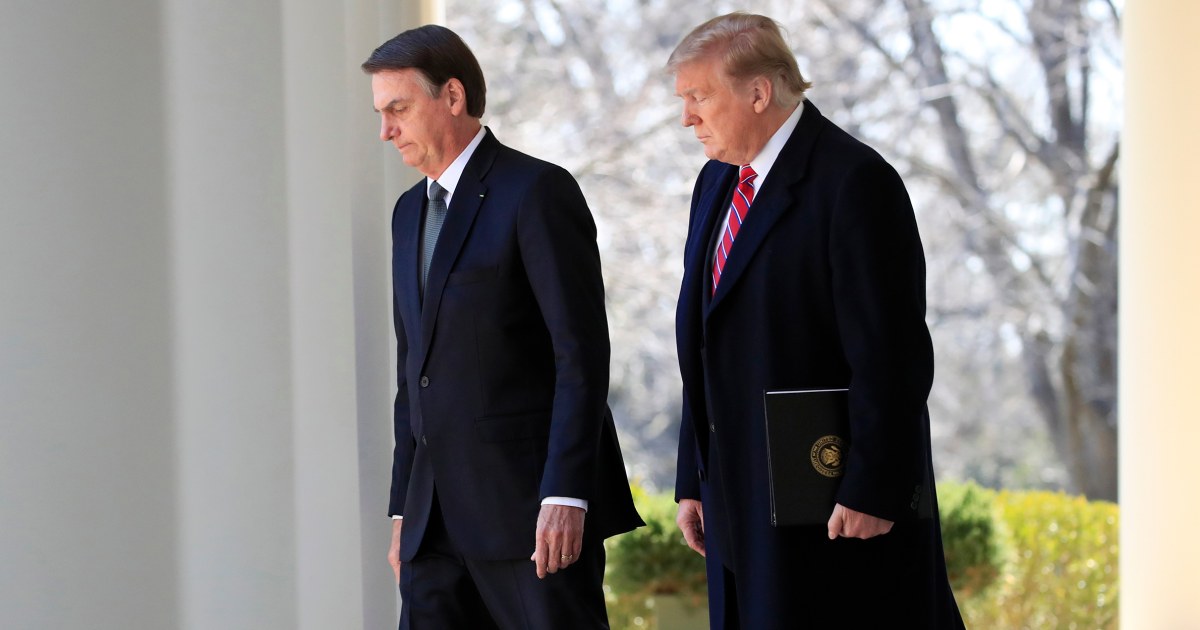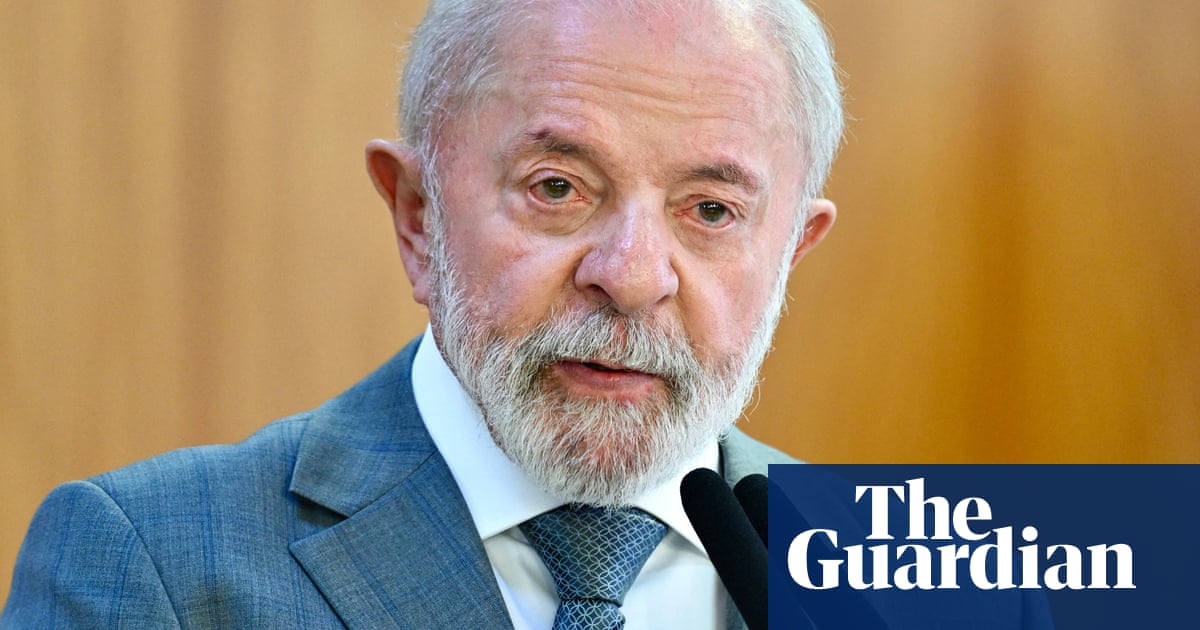You are using an out of date browser. It may not display this or other websites correctly.
You should upgrade or use an alternative browser.
You should upgrade or use an alternative browser.
I can’t afford this Trump economy
- Thread starter The Thriller
- Start date
Sardines
Well-Known Member

Just a heads up, whenever I see a thread where the last post is by someone I have on ignore I just post whatever I find in like 15 seconds so as to deny them the last word in a thread. No idea what they post but I only have two active posters on ignore so I know they either posted a meme or a tweet because they do not have original thoughts.
Red
Well-Known Member
I only have one cop of coffee a day. Most days. Always buy only when on sale. The other day I noticed a medium size canister of Folgers at Walgreens was $19.99. Ouch.
There are hundreds of millions of Americans that Trump could have thought of first, before imposing 50% tariffs on goods from Brazil. But he didn’t. He thought of Jair Bolsonaro first. He put Bolsonaro, the authoritarian who wants to burn down the entire Amazon rainforest, ahead of us.

 www.msnbc.com
www.msnbc.com
President Donald Trump sent his Brazilian counterpart a stunning letter Wednesday, informing President Luiz Inácio Lula da Silva that his country would face a new 50% tariff "due in part to...the way Brazil has treated" former Brazilian President Jair Bolsonaro, a Trump political ally.
Trump blamed the massive spike in tariffs partly on “Brazil’s insidious attacks on Free Elections, and the fundamental Free Speech Rights of Americans.” The first reference is related to the trial of Bolsonaro, a one-time frequent visitor to Mar-a-Lago, on charges of attempting to illegally overturn his country’s presidential election results in 2022. "This trial should not be taking place," Trump wrote. "It is a Witch Hunt that should end IMMEDIATELY!"
The latter accusation stems from a Brazilian Supreme Court ruling last monththat deemed social media companies are responsible for the content posted on their platforms. (Ironically, this is also a goal of many American conservatives who advocate for revoking Section 230, which shields American platforms from being accountable for their users’ posts.) X was also briefly banned in the country during a standoff with billionaire Elon Musk over a court request to ban accounts that violated local laws. Trump railed against this and other court decisions in his letter as “SECRET and UNLAWFUL Censorship Orders to US. Social Media platforms.”
But Trump also attempted to frame the decision as one grounded in legitimate economic and trade issues. “In addition, we have had years to discuss our Trading Relationship with Brazil, and have concluded that we must move away from the longstanding, and very unfair trade relationship engendered by Brazil’s Tariff, and Non-Tariff, Policies and Trade Barriers. Our relationship has been, unfortunately, far from Reciprocal,” he wrote. Contrary to Trump’s claims, though, the United States holds a $7 billion trade surplus with Brazil.

 www.theguardian.com
www.theguardian.com
There are hundreds of millions of Americans that Trump could have thought of first, before imposing 50% tariffs on goods from Brazil. But he didn’t. He thought of Jair Bolsonaro first. He put Bolsonaro, the authoritarian who wants to burn down the entire Amazon rainforest, ahead of us.

Trump pledges stunning tariffs on Brazil for following its own laws
The letter addressed to his Brazilian counterpart reads as a threat to end the ongoing trial of his predecessor, Trump ally Jair Bolsonaro.
President Donald Trump sent his Brazilian counterpart a stunning letter Wednesday, informing President Luiz Inácio Lula da Silva that his country would face a new 50% tariff "due in part to...the way Brazil has treated" former Brazilian President Jair Bolsonaro, a Trump political ally.
Trump blamed the massive spike in tariffs partly on “Brazil’s insidious attacks on Free Elections, and the fundamental Free Speech Rights of Americans.” The first reference is related to the trial of Bolsonaro, a one-time frequent visitor to Mar-a-Lago, on charges of attempting to illegally overturn his country’s presidential election results in 2022. "This trial should not be taking place," Trump wrote. "It is a Witch Hunt that should end IMMEDIATELY!"
The latter accusation stems from a Brazilian Supreme Court ruling last monththat deemed social media companies are responsible for the content posted on their platforms. (Ironically, this is also a goal of many American conservatives who advocate for revoking Section 230, which shields American platforms from being accountable for their users’ posts.) X was also briefly banned in the country during a standoff with billionaire Elon Musk over a court request to ban accounts that violated local laws. Trump railed against this and other court decisions in his letter as “SECRET and UNLAWFUL Censorship Orders to US. Social Media platforms.”
But Trump also attempted to frame the decision as one grounded in legitimate economic and trade issues. “In addition, we have had years to discuss our Trading Relationship with Brazil, and have concluded that we must move away from the longstanding, and very unfair trade relationship engendered by Brazil’s Tariff, and Non-Tariff, Policies and Trade Barriers. Our relationship has been, unfortunately, far from Reciprocal,” he wrote. Contrary to Trump’s claims, though, the United States holds a $7 billion trade surplus with Brazil.

Brazil draws up plans to retaliate against Trump’s 50% tariff threat
Brazilian president convened country’s ministers to discuss how his government should address US duties
Last edited:
Red
Well-Known Member
I have nobody on ignore. At the moment. I noticed the comment you mention. It was a meme telling us, believe it or not, that the only thing USAID accomplished was to make millionaires out of many Democrats.
Just a heads up, whenever I see a thread where the last post is by someone I have on ignore I just post whatever I find in like 15 seconds so as to deny them the last word in a thread. No idea what they post but I only have two active posters on ignore so I know they either posted a meme or a tweet because they do not have original thoughts.
Sometimes, I’ll make the effort to correct what is clearly a lie. And since the truth about USAID is hideous, it makes the aforementioned meme one of the most disgusting posts imaginable.

The Forecasted Death Toll of Shuttering USAID
Multiple studies have estimated millions will die annually as a result of the Trump Administration’s closure of the foreign-aid agency.
President John F. Kennedy said in 1961 that “there is no escaping” what he described as America’s “moral obligations as a wise leader and good neighbor in the interdependent community of free nations; our economic obligations as the wealthiest people in a world of largely poor people, as a nation no longer dependent upon the loans from abroad that once helped us develop our own economy; and our political obligations as the single largest counter to the adversaries of freedom.”
He was speaking to Congress about foreign aid and later that year would establish through executive order what has since been known as the U.S. Agency for International Development (USAID), which helped make the U.S. the world’s largest foreign aid provider.
For more than six decades, USAID has helped dozens of low- and middle-income countries, including conflict-stricken ones, to improve access to food, water, health care, and education. It’s helped stop disease outbreaks, revolutionize agricultural practices, and in some cases, promote democracy.
But on Tuesday, USAID shutters its doors for good.
The agency’s dismantling began just days after President Donald Trump returned to the White House at the start of this year. Tech billionaire and one-time Trump ally Elon Musk, who was spearheading the Department of Government Efficiency, singled out the agency as a locus of “corruption and waste,” despite the fact that it constituted just about 0.5% of government spending.
Secretary of State Marco Rubio, who took the reins of the agency in February, said in March that more than four-fifths of USAID programs were cancelled, and the approximately 1,000 that remained would be absorbed by the State Department by July 1, even amid court battles about the constitutionality of USAID’s closure.
On the eve of USAID’s final day, former Presidents George W. Bush and Barack Obama gathered with former staffers as well as U2 singer and humanitarian Bono on a video call. Obama described USAID’s gutting as a “travesty” and a “tragedy,” according to the Associated Press.
“You’ve showed the great strength of America through your work,” Bush told the USAID staffers. “Is it in our national interests that 25 million people who would have died now live? I think it is, and so do you.”
Trump, evidently, does not.
Just how many lives won’t be saved as a result of the closure of USAID has been the subject of several studies and projections.
On Monday, medical research journal The Lancet estimated that USAID prevented the deaths of more than 90 million people between 2001 to 2021. The study, conducted by researchers from Brazil, Mozambique, and Spain, forecasted that the defunding of the agency could lead to some 14 million deaths by 2030, including 4.5 million deaths of children and babies under the age of 5.
Here are some of the biggest estimated impacts of the U.S. shirking Kennedy’s “obligations.”
South Korea's tariff saga is a warning to the world
Opinion by Joseph Zeballos-Roig• 4h•
4 min read

South Korean President Lee Jae-myung delivers his first budget speech at the National Assembly in Seoul, on June 26, 2025.© Jung Yeon-je
In 2018, South Korea handed President Donald Trump the first trade victory of his administration.
Under the agreement, new South Korean steel export restrictions were put in place and more U.S. automakers could export their cars to South Korea.
The president hailed it as "a historic milestone," a "great deal for American and Korean workers" and a "fair and reciprocal" deal. That was probably overselling what amounted to a modest rewrite of a pre-existing trade agreement, but South Korea was happy to play along if it meant buying peace and quiet.
When Trump took office in January, South Korea seemed well-positioned to weather the looming tariffs the president was eager to implement. But it was not to be. Earlier this week, Trump announced he would impose a 25% tariff on South Korean exports starting Aug. 1, unless its government agreed to even more concessions.
The new threat sent a message that resonated far beyond Seoul: Trump can't be trusted.
Foreign leaders have already noticed that nobody is safe from the mercurial temperament of the U.S. president and his endless appetite for tariffs and and a light-switch approach to flipping them on and off. So far in his second term, Trump has broken more trade deals than forged new ones, and the goalposts are constantly moving. The president inked a sweeping deal with Canada and Mexico in his first term, then turned around and launched another trade war earlier this year.
The behavior might earn the “dealmaker-in-chief” a new nickname: the “dealbreaker-in-chief.”
On Monday, Trump blasted out letters to over a dozen trade partners threatening to reimpose tariffs on Aug. 1 if they didn’t cut new trade agreements. South Korea was among the countries put on notice for a 25% tariff, and more are being posted on social media through the week.
“We invite you to participate in the extraordinary Economy of the United States, the Number One Market in the World, by far,” Trump said in the letter addressed to South Korean President Lee Jae-myung. Notably, the president left wiggle room to adjust the tariffs up or down based on his feelings about the outcome of the negotiations.
It was a far cry from the trade agreement with South Korea in 2007, the U.S.’s first bilateral trade pact with a major Asian power, negotiated over 10 months under the second Bush administration in an environment where free trade was ascendant in both parties. It went into force five years later.
While Washington viewed that deal as key to its approach to the Pacific, the current fight is just one of dozens that Trump has started in recent weeks on large and small nations alike. South Korean officials are working hard to come up with an agreement that would please Trump, but progress has stalled as there's little clarity on what he even wants as the endgame.
Trump's 'lack of clarity' on tariffs creating 'dramatic swings' in market: Expert
“We are doing our best to bring about a result mutually beneficial to both sides, but we have been unable to establish what each side exactly wanted from the other side,” Lee said last week.
While past presidents viewed South Korea as a valuable military ally against North Korea, an isolated totalitarian state that occasionally makes threats against the U.S., Trump sees it as a freeloader taking advantage of incompetent American leadership. In his first term he referred to the updated 2012 trade agreement with South Korea as "a horrible deal" and "a Hillary Clinton disaster" that was a "one-way street."
South Korea will probably have to accept the fact that Trump's idea of a good trade deal is a one-way street in his favor. The Trump administration touted a new accord with Vietnam last week that kept a 20% tariff on Vietnamese imports while clearing the way for U.S. exports to Vietnam to face no import taxes. Stephen Miran, a Trump economic adviser, praised it as an “extremely one-sided” deal.
But that doesn't mean it's a good deal for the U.S. exactly. After all, it's U.S. companies that will be forced to pay those tariffs. For smaller businesses that have long worked with Vietnamese counterparts to, say, build the furniture that they sell, the trade deal locks in higher prices for the near future and years of hassle as they try to reorient their supply chains.
Trump has brought back mercantilism, the outdated economic theory that a nation's wealth and power were measured by exporting more than it imported. The U.S. and other world powers largely moved away from that model and toward more and more free trade after the Great Depression and World War II, when they realized that trade barriers hurt more than they helped.
Anti-tax conservative activist Grover Norquist summed it up in a discussion of tariffs at an April event with journalist Steve Clemons.
“In trade wars, all the casualties are friendly,” he said. “Everybody doesn’t shoot across World War I trenches at other guys. They shoot down the trench at their own team.”
This article was originally published on MSNBC.com

